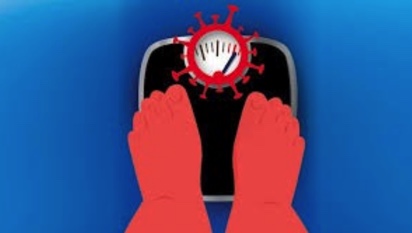Obesity in the United States

AAYUSH PATEL – Obesity in the United States is a growing problem. According to the CDC, from 2017-2018, the obesity rate in the US was 42.4%, almost half the population in the country. Obesity is more prevalent in people without a college education, which points to socioeconomic status being a prevalent factor in obesity rates. In the United States, higher paying jobs often require a college education or higher. Without access to such an education due to socioeconomic factors, people with a high school diploma or less only have access to lower paying jobs that sometimes do not pay more than minimum wage. These circumstances only fuel the downward spiral of obesity.
Healthy food costs almost twice as much as unhealthy food according to one study published in 2017, and prices are a top consideration in decision making when buying food. Therefore, it is no wonder that those of lower socioeconomic status often have no choice but to eat unhealthier foods. A family will want to spend their limited paycheck as economically as possible, which means buying cheaper unhealthy foods in a larger quantity to last longer. It has become a luxury to have healthy and organic foods.
Another factor in the growing obesity problem is that 80% of Americans do not get enough physical exercise. This lack of physical activity among the US population can be attributed to a variety of factors that have changed the way we work, play, and transport ourselves. With the advent of the internet, the US population spends a significant amount of the day sitting down. In schools and work as well, the majority of time (up to 7 hours a day) is spent sitting with minimal physical activity. Commutes between work and home also add another 30 minutes to an hour of inactivity. The way we conduct ourselves throughout our day is unhealthy, but it is very difficult to change because both jobs and school have little flexibility to implement the said change in lifestyle.
Clearly, it is important for schools, workplaces, and other institutions to take actions that support a more active lifestyle for Americans. Schools can keep recess beyond elementary school, allowing students a much needed mental and physical break. This recess period can lead to the formation of healthy habits later in life as well since students will become accustomed to engaging in physical activity. Workplaces can also implement various solutions, such as the utilization of desk exercise machines or free gym memberships that makes physical activity more accessible. Towns can invest in parks and trails as well for the same reason. Education on nutritious eating could be especially important in helping individuals of low socioeconomic status consume more healthy, nutritious foods. . Government programs can also be implemented to allow greater access to healthy foods. Other countries with similar circumstances should take note of these factors of obesity and possible solutions to prevent obesity from taking hold.
Copy Editor: Aditi Madhusudan
Photography Source: https://www.indiatoday.in/magazine/health/story/20210920-the-fatness-epidemic-1851186-2021-09-10
